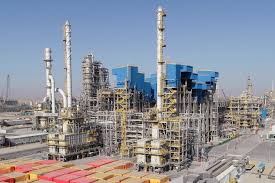Anura’s Biggest Foreign Direct Investment Faces Market Share Deadlock

(Lanka-e-News -28.June.2025, 10.55 PM) Six months after Sri Lanka’s left-leaning National People's Power (NPP) government trumpeted a landmark $3.7 billion investment deal with China’s oil giant Sinopec, the country’s largest-ever Foreign Direct Investment (FDI) remains mired in uncertainty.
A project once hailed as the jewel in President Anura Kumara Dissanayake’s economic revival plan is now stalled amid a quiet but tense stand-off between the Sri Lankan government and Sinopec over one crucial sticking point: domestic market access.
Announced with much fanfare during President Dissanayake’s state visit to Beijing earlier this year, the deal was meant to signal Colombo’s shift from dependency to development—a new dawn for the debt-ridden island struggling to rebuild post-economic collapse. Yet, six months on, the only thing tangible is the confusion, as neither side appears willing to blink first in a clash of commercial and political priorities.
The project is to be based in Hambantota, a southern coastal region already home to a controversial Chinese-built port. The plan includes a sprawling, state-of-the-art refinery with a daily output capacity of 200,000 barrels, promising not just a transformative boost in energy refining but also significant job creation in one of the nation’s poorest provinces.
An estimated 70% of the refinery’s output is slated for export, particularly targeting the South Asian and African markets, while the rest—up to 30%—was envisioned to cater to Sri Lanka’s domestic fuel demand.
However, officials within Sri Lanka’s Ministry of Power and Energy have confirmed that talks have hit a roadblock. “Sinopec is demanding unrestricted access to the local fuel market for its refined products,” said a senior ministry source, speaking to Lankaenews on condition of anonymity. “But the government has insisted on a 20% cap on domestic sales.”
The rationale for this cap, according to officials close to President Dissanayake, is to protect the fledgling state-owned Ceylon Petroleum Corporation (CPC), which is already struggling under losses, ageing infrastructure, and past corruption scandals. Allowing a behemoth like Sinopec unfettered access could, critics argue, eviscerate local capacity and place critical energy supply under foreign control.
The Memorandum of Understanding between Sri Lanka’s Ministry of Energy and Sinopec was ceremonially inked in Beijing in March 2025, accompanied by a cascade of photo ops and pledges of cooperation. The President’s Media Division (PMD) hailed it as a “generational investment” that would “uplift the livelihoods of low-income communities” and “reshape Sri Lanka’s economic fundamentals.”
Yet, sources in both Colombo and Beijing confirm that the devil remains in the details—details that were never fully ironed out in the honeymoon phase of negotiations. Chief among them is the market share impasse, which, in the world of oil and geopolitics, is far more than a bureaucratic technicality.
Professor Liu Zongyi, a Senior Fellow at the Shanghai Institutes for International Studies and an influential voice in China’s South Asia diplomacy circles, told Chinese media in May that Sinopec “is encountering bureaucratic resistance and political hesitation” in Sri Lanka. Without directly criticizing President Dissanayake’s government, he implied that Beijing was growing frustrated with the island’s red tape and mixed signals.
The refinery deal is part of a broader strategy by China to reassert economic influence in South Asia after a period of recalibration. For Sri Lanka, the deal was supposed to be a welcome lifeline—injecting sorely needed foreign capital into a country that has only recently emerged from sovereign default and IMF-imposed austerity.
The fuel sector in Sri Lanka has historically been monopolized by CPC and Lanka IOC, a subsidiary of Indian Oil Corporation. Opening up the domestic market to a third player—especially one of Sinopec’s scale—would upend the status quo.
Industry analysts say the government’s 20% cap proposal is an attempt to slowly liberalise the market without causing chaos. Sinopec, however, is unlikely to accept such restrictions after pouring billions into refining infrastructure.
“From a commercial perspective, Sinopec would want guaranteed revenue streams, not vague export opportunities,” said Liyanage, an energy economist at the University of Colombo. “Without local market access, they carry all the risk of international price fluctuations, logistical issues, and regional political instability.”
Moreover, Sinopec’s demands for regulatory guarantees and land allocations have reportedly been agreed upon—minor issues, say officials. The primary hurdle remains market share, a matter that goes beyond economics and into the realm of political ideology and strategic autonomy.
Despite the impasse, both sides appear reluctant to pull the plug. A Prominent Industrial expert in Colombo, speaking on background, confirmed that “constructive discussions” are ongoing and “both sides are committed to finding a solution.”
President Dissanayake, known for his firebrand rhetoric and anti-neoliberal stance, is said to be personally invested in ensuring the deal goes through. A failed flagship FDI at this stage of his presidency could severely damage his credibility and derail his narrative of economic transformation without Western dependency.
But with each passing month, the window of opportunity narrows. Construction timelines are slipping, costs are rising, and investor confidence is beginning to wobble. Already, murmurs have begun in Colombo’s diplomatic circles that Indian and Western oil interests are quietly lobbying to slow or sabotage the deal—fearing increased Chinese leverage in the Indian Ocean energy routes.
The NPP government now finds itself walking a tightrope—between appeasing a powerful Chinese investor, safeguarding national economic autonomy, and maintaining the public trust it earned on a promise of clean, sovereign-led development.
In theory, the Sinopec project could be a game-changer. In practice, it’s a political minefield.
As the monsoon rains lash the empty Hambantota coastline where the refinery is supposed to rise, the mood in Colombo is increasingly one of uneasy anticipation.
Will the refinery ignite Sri Lanka’s economic revival, or will it become yet another ghost project dotting the nation’s troubled development landscape?
Only time—and diplomacy—will tell.
-By LeN Economic Correspondent
---------------------------
by (2025-06-28 17:32:38)
Leave a Reply